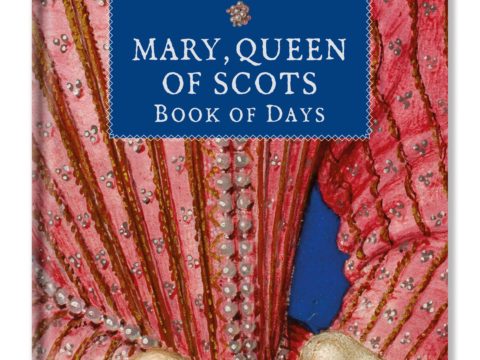Margaret Tudor: Life Story
Chapter 11 : Return to Scotland
Albany’s eagerness for a truce with England owed at least something to his desire to visit his wife in France. He was less than enamoured of his role in Scotland. He was far from home, beset on all sides with quarrelsome nobles, accused by Margaret of murdering her son, and suspected of having his eyes on his cousin’s throne. In a moment of weakness, he told the English Clarencieux Herald that he wished he had broken both arms and legs before setting foot in the country.
The Scots nobles would not let him depart without promises to return, and they insisted that if he travel through England, high-ranking hostages should be given to prevent any fear of kidnap. This was customary, but the Scots’ demands were high – the Earls of Northumberland and Surrey, as well as Dacre – and Henry would not consent.
Henry, Wolsey and Albany therefore worked out a peace treaty which allowed Margaret to return to Scotland. Margaret had corresponded with Angus during her sojourn in London, although he had declined an invitation to visit her, even though Albany had given permission. He was waiting for her, with a large group of Scots nobles, including Sir Antony d’Arcie, Sieur de la Bastie, Albany’s lieutenant when she crossed the border at Lamberton Kirk on 15th June 1517.
Ignorant as yet of the existence of Lady Janet of Traquair and her daughter, Margaret was happy to see her husband, and was probably glad that Albany had sailed for France on 7th June.
It had been agreed that Margaret would live at Stirling Castle, and have unlimited access to King James, but, in fact, her access to her son was severely limited. She was permitted to see him, under supervision at Craigmillar, but it was apparent that the Scots Lords feared that she would abduct him to England.
Margaret was also beset with money troubles. As part of the negotiations for a truce, she had been promised her jointure rights – referred to by Margaret as her ‘conjoint feoffment' that is, the lands settled on her as Queen of Scots, to be enjoyed for her whole life, as well after as before the death of James IV.
Although part of the reason for Margaret being denied her jointure may have been a general disinclination to part with money when the Crown was so poor, particularly to a Queen suspected of favouring England, it now transpired that the Scottish Lords were reluctant to give her money because she had withheld the 18,000 gold crowns that had been given to James IV by King Louis XII, just prior to the Battle of Flodden.
Rather than paying the money to the Treasury, as was expected in a time when monarchs paid for government, Margaret had kept the money herself. The disappearance of such a sum makes her complaints of poverty hard to credit. Shortly after her return to Scotland, she wrote to Henry that she had been constrained to spend the money as she had not received her proper income.
Matters in Scotland remained tense – after Lord Home had been apparently reconciled with Albany in January 1516, he and his brother, David, had been executed for treason. They had certainly provoked the wrath of the law, but Albany was much castigated for breaking a promise of safe-conduct to Home. The consequence was that Home’s kinsman, George Home of Wedderburn, ambushed the Sieur de la Bastie and killed him. As de la Bastie was a servant of the French King, François demanded punishment for Home, but he was nowhere to be found. Margaret assumed that Dacre was sheltering him, but this was denied.
With Albany still in France, and de la Bastie dead, James Hamilton, Earl of Arran, was appointed to act as Governor. He was the next heir to the throne after Albany, being descended from James II. He had had a colourful career as a pirate, which had led to a falling out with James IV, and Arran’s temporary exile in France. He had therefore missed the Battle of Flodden.
Now, he took up the role of Governor as a long-term support of the French alliance. Having previously been on good terms with Angus, he came to suspect that Angus had had a hand in de la Bastie’s assassination. Angus’ brother, Sir George Douglas, was arrested, leading to an enmity between the Hamiltons and the Douglases that would last for generations. Angus was devoted to his brother George, who appears to have supplied the brains whilst Angus supplied the manpower, in the Douglas faction.
Margaret began to believe that the return of Albany might actually be the best option. He, however, was not at all eager to leave his home again and return to strife-torn Scotland. He suggested that Margaret should take up the Regency herself, an idea that she was certainly eager to promote, putting forward the idea of a co-Regency with Angus. Unsurprisingly, this idea found no favour with the other Scots Lords.
The suggestion of a co-Regency occurred during one of the brief periods of reconciliation between Margaret and Angus, which broke down shortly after. In an agreement arranged with Dacre, Angus had agreed that Margaret’s jointure would be entirely at her own disposal, but he blithely ignored his promises and collected her rents at Ettrick Forest and Methven for himself, settling at Margaret’s castle of Newark with Lady Janet.
Margaret, Queen of Scots
Family Tree




